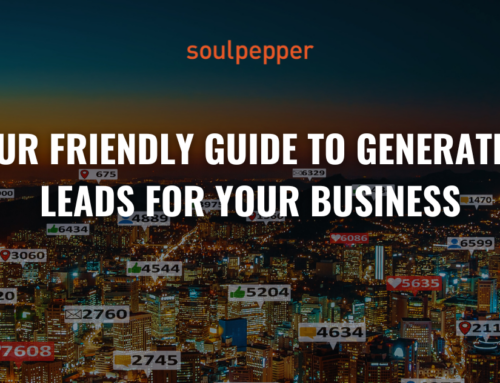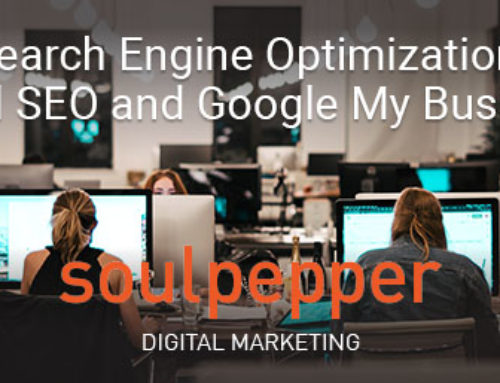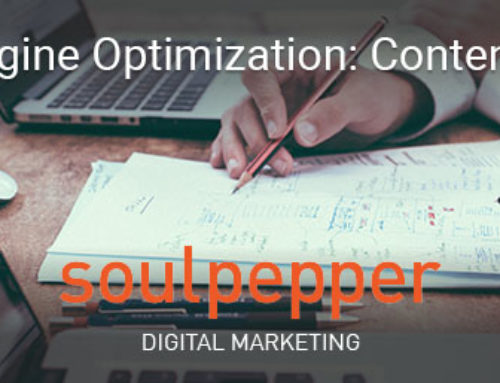Last week we focused on websites that generate leads as their primary purpose. This week we are focusing on a different type of website, with a specific driving metric: eCommerce sales. So hang on. This is how you start making some serious coin.
If you have a website that sells physical and/or virtual products, your end goal is almost always to get more sales. For the purposes of this article, I’m going to assume that you have already read our last 2 blog posts that covered a variety of tips and techniques I’m not going to rehash here.
Once the customer has run the Gauntlet, and feels comfortable that you can probably provide them with what they are looking for, a whole new set of challenges emerge. How does the customer find the product they are looking for? How do you make your product stand out? How do you seal the deal and get the user to Checkout?
1. Find the Product
Your ultimate goal should be to cater to different user needs in a unified user interface through an intelligently organized website design.
Your ultimate goal here should be to cater to different user needs in a unified user interface through an intelligently organized website design. Some users might need more hand-holding, while others just want to casually browse. Each type of shopper presents unique challenges, as well as unique opportunities. Let’s discuss some common user archetypes to help you formulate your plan.
The Reluctant Shopper
This type of shopper is generally uncomfortable and nervous about shopping online. They are typically less tech-savvy and needs more guidance throughout the entire shopping experience. One of their biggest concerns is privacy and security; therefore, they respond well to promising statements of trust and customer service. Also, because online shoppers cannot physically touch the item they are buying, promoting free shipping, return and refund policies greatly increases the likelihood they will do business with you.
The Recreational Shopper
Recreational Shoppers would prefer to spend an entire afternoon at the mall casually exploring any store that piques their curiosity. They are usually shopping for the experience, and have a tendency to be more adventurous and impulsive in their shopping habits. Because these shoppers respond to visual cues, you need to wow them with dynamite photography, featured item showcases, unbeatable deals and the occasional unique surprise. Offering special deals to newcomers may help sway this a user with these habits.
The Power Shopper
Power Shoppers know exactly what they want, have sophisticated shopping strategies, and don’t want to waste time casually perusing your website. For these shoppers, your first priority is to provide them with an awesome search bar so they can type exactly what they want. In terms of design, you want to make sure your search bar is large and presented with enough contrast so it’s easily visible. In terms of functionality, if you can have the search bar auto-suggest potential searches as you type, you are making it a lot easier for them to find your product.
2. Showcasing the product
As always, with any new page, your conversion clock is ticking.
Once a customer has found the product, you need to ensure to provide them with all the information to allow them to make an informed decision. As always with any new page, you conversion clock is ticking. Making it easier and faster to find the information that is required to confidently make a purchase is key to getting that conversion. We have a quick list of elements you should highlight to achieve the conversion.
Photos
People need to know what the product looks like. We are visual creatures after all. Using high-quality photography is the key to showcasing your product. If you only have 1 photo, my suggestion would be to ensure the product has a distraction-free, neutral-colored background. Any additional alternate photos you can provide allows the user to get a better feel for the product they are considering purchasing. Providing a shot of the product in a lifestyle setting allows the user to visualize what the product might look like in the real world.
Price
Price is perhaps the biggest reason why a shopper will abandon your website and look elsewhere. Regardless of what you actually charge, there are some key things you can do to accentuate the price. First, display the price boldly and clearly. If your price is discounted from the suggested retail price, show them the discount. Everybody likes to know they are getting a deal.
Add to Cart
Because your call-to-action entices the user to click on the “Add to Cart” button, you must give plenty of attention to optimizing it for conversions. It’s your most important button, so don’t hide it. Use bold colors that contrast well with your design and attract attention. Try choosing a color that is not used anywhere else in the design to really set it apart. By making the button plainly visible, shoppers won’t have to wonder how to add items to their shopping carts. Any time spent searching for the “Add to Cart” button is time in which the shopper will reconsider her motivation to purchase. Remember, the clock is ticking.
Reviews
Social influences have a profound effect on our shopping behaviors. You can talk up your product all you want, but shoppers won’t believe one word of it until it’s been confirmed by an independent customer. While positive reviews will motivate users to take the plunge and purchase an item, negative reviews give you a unique opportunity to either make product changes or respond to customer concerns publicly. This open and proactive approach to giving and receiving feedback ultimately gives your website more credibility, which translates into loyal customers and repeat sales.
Deals
Without a doubt, shoppers are responsive to deals and promotions, and the king of all deals is free shipping. In order to offer this and still make a profit, make a minimum purchase amount, but don’t make it too high. A minimum purchase amount will encourage shoppers to spend a little bit more just to get free shipping.
Related Products
Offering shoppers suggestions gives you the opportunity to feature items they wouldn’t have stumbled upon otherwise. Some shoppers might not be savvy in searching, but are more likely to wander through your website based on the suggestions they receive. Because the biggest reason for a lack of conversion on ecommerce websites is not being able to find the desired product, this feature gives you the unique opportunity to customize the products your customers see based on their browsing history.
3. Sealing the Deal
If you can successfully get the user to add a product, or better yet, multiple products to their cart, it’s not time to celebrate yet. While shopping is fun, spending money isn’t. Now that the customer has shown intent to purchase, your website’s job is to get customers through the payment as quickly and painlessly as possible.
Provide live chat support
Regardless of how much information you have on your site, there will always be further questions. The faster you can answer those questions, the less likely the user is to leave the site. Live chat not only lets you help your users with technical problems, but it also allows you to encourage them to complete their order.
Make your Checkout page fast and easy
How easy is your checkout to complete? How fast can the user complete the process? The clock is still ticking. Make it easy and fast for your customers.
Follow up
If you’ve been keen enough to capture a customer’s email address in the first steps of the checkout process, you have the ability to recover a lost sale if they decides to jump ship. Maybe you can email them offering a discount on the product they had added in their cart, there are even automated solutions that can do this for you.
Use cookies
Selling your products online is as much an art as it is a science.
A cookie is a small amount of information a website puts in a user’s web browser so that it can remember something about him/her at a later time. You can leverage this simple tool to remember a user’s shopping cart or shopping history, so when they do visit your website again, they can pick up where they left off.
Selling your products online is as much an art as it is a science. You need the creative prowess of both a marketing and design genius to attract customers, and the keen eye of a usability guru to make conversions happen. However, implementing the suggestions provided above should help increase your conversion rate, and lead to happy and satisfied customers. Remember, we are here to help.
– – –
Written by Gabriel McCay
About the author
Gabriel McCay is a soulpepper who is passionate about creating positive social and environmental impact. A sought after web designer with over a decade of marketing, and development experience, he also the founder of his own full-fledged digital agency.
Like what you see? Subscribe to our newsletter for more great tips and strategies to grow your ecommerce empire.






Leave A Comment